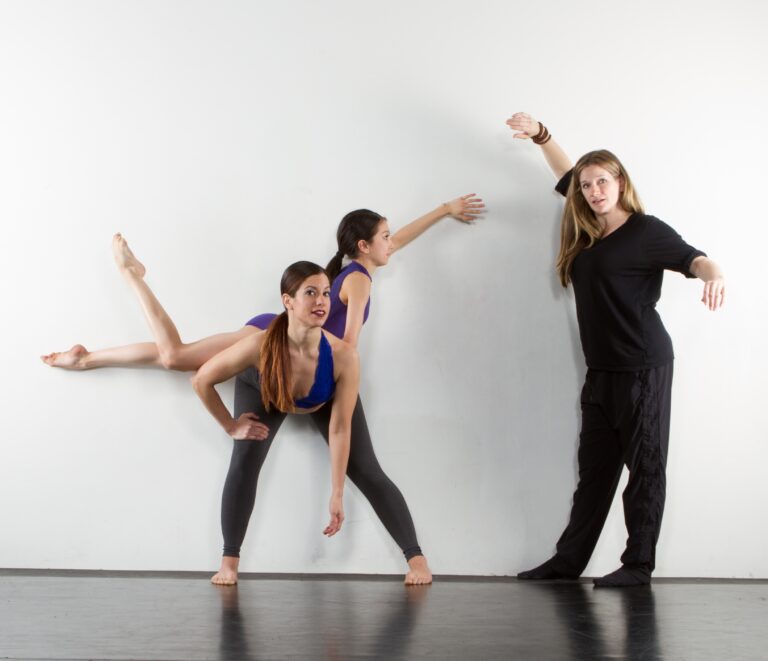Steph Lee, a dancer with Renegade Performance Group in New York City, spent more than 10 years of her dance career fighting recurring injuries. It wasn’t until she added CrossFit—the heavy-lifting, loud-grunting, specialized gym workout that has taken the world by storm—to her cross-training routine of Pilates and yoga that she found some relief. “Nothing helped my injuries more quickly than starting a strength-training routine,” Lee says. “I did 10 to 12 hours of strength and mobility work every week for almost five months to focus on getting stronger and overcoming my injuries.”
CrossFit-style classes are on one extreme of the weight-training spectrum, and they can pose real threats to dancers’ safety. “If you’re constantly taking the body to its limits, working it when it’s tired, that’s when injuries happen,” says Sean P. Gallagher, PT, owner of Performing Arts Physical Therapy in NYC. “You run the risk of not being properly aligned or doing things the best way possible.” However, there’s an important lesson in Lee’s success story. Many dancers stick to light weight-training in the form of resistance-band exercises or Pilates classes to maintain their long, lean musculature and flexibility. But sometimes heavier lifting can fill gaps in your strength, building muscle and stabilizing joints to help prevent injury. If you’re looking to amp up your weight-training regimen, there are steps you can take to maximize the benefit for your dancing—and to make sure you’re doing it safely.
Find a good time to start.
First, consider your timing when trying your first strength class or session with a trainer. “If you have a long day of rehearsal ahead or a big performance the next night, that’s not the right time to try something new,” says Gallagher, who works with dancers at Paul Taylor Dance Company and in the casts of Broadway’s Mamma Mia!, Finding Neverland and Kinky Boots. “You’ll end up awfully sore, since you’re probably going to use muscles you haven’t used—or used in that configuration.” Instead, try it when you have a break to see how a new routine will affect your performance.
Do your research. Know what you’re getting into.
Whether you seek out a weight-training class at your gym or go to a PT or trainer for exercise advice, you’ll want a workout that complements your dance training. It should develop muscles you use in your dancing and address weaknesses without creating strength imbalances. For female dancers, core strength is vital, so a workout that focuses on the core while also developing muscle in the arms and legs—such as a full-body conditioning class—is a great option. For men, working the arms, back and core may be the goal. “If it will benefit your dancing, then yes, try it out,” says Gallagher. “Just be careful not to overdo it.”
Put form first.
While proper technique is essential in the studio, it’s even more crucial when lifting heavy weights. For most dancers, this means not giving in to flexibility. Instead, proper form when lifting usually means resisting hyperextension in the arms and legs, and keeping feet in parallel instead of turned out.
You’ll also be learning to work with equipment. Instead of resistance bands or body-weight exercises, heavy-lifting routines involve working with dumbbells, kettlebells, barbells and medicine balls. The best way to adjust is to start small and light, and always get input from an expert. Have a personal trainer, physical therapist or dance trainer ensure you’re working out with proper form before adding weight or increasing reps.
Don’t fear the burn.
“One of the biggest fears many women—and some men—have is that they will get huge and bulky,” says Kasey Heil, a coach at CrossFit NYC who has worked with dancers and choreographers. But building a little muscle and stability is the whole point of trying a more intense strength-training program, and being toned will help dancers perform longer, jump higher and turn faster. Plus, lifting heavier weights helps your body torch more fat and calories than you’ll burn working with a resistance band. “Yes, you will gain more muscle and lean out with heavy lifting, but in order to get truly bulky, you need to lift very heavy weights, eat all of the food and have genetics that allow for bigger muscles,” says Heil. If you find you’re prone to muscling up, however, ease off and use lighter weights or do fewer reps.
Listen to your body, not your competitive drive.
“I was hooked the first time I tried CrossFit,” says Jenny Stulberg, a dancer, choreographer, yoga instructor and personal trainer in San Francisco. “The classes were challenging and competitive while being fun and sweaty—all the same things I love about dance.” But intense weight-lifting workouts can very easily—and quickly—lead to injury.
“When you cross-train at a high intensity, like in CrossFit, you’re more likely to get hurt,” says Gallagher. Dancers are naturally competitive, and many heavy-lifting workouts are fueled by competition among participants. Exercises are intended to be fast and furious, often executed against the clock. But even if a coach, trainer or workout buddy is screaming to eke out “one more rep,” be smart and back off when you need to. Being too competitive will more likely lead to injury than success. “While strength, endurance and agility training are imperative for dancers, they come with dangers if proper form and alignment are not taken into account,” says Stulberg. “You absolutely must make smart choices about your own body.”



